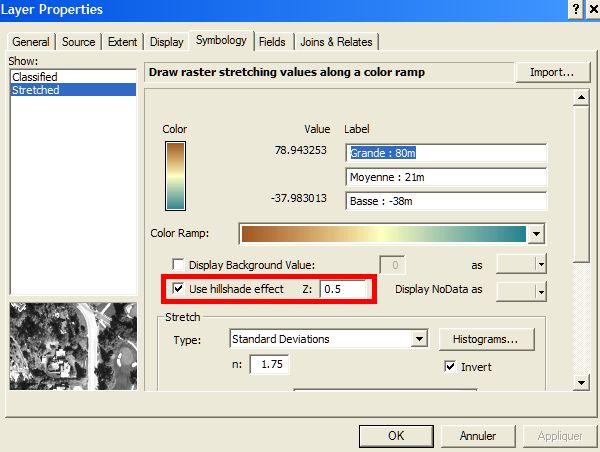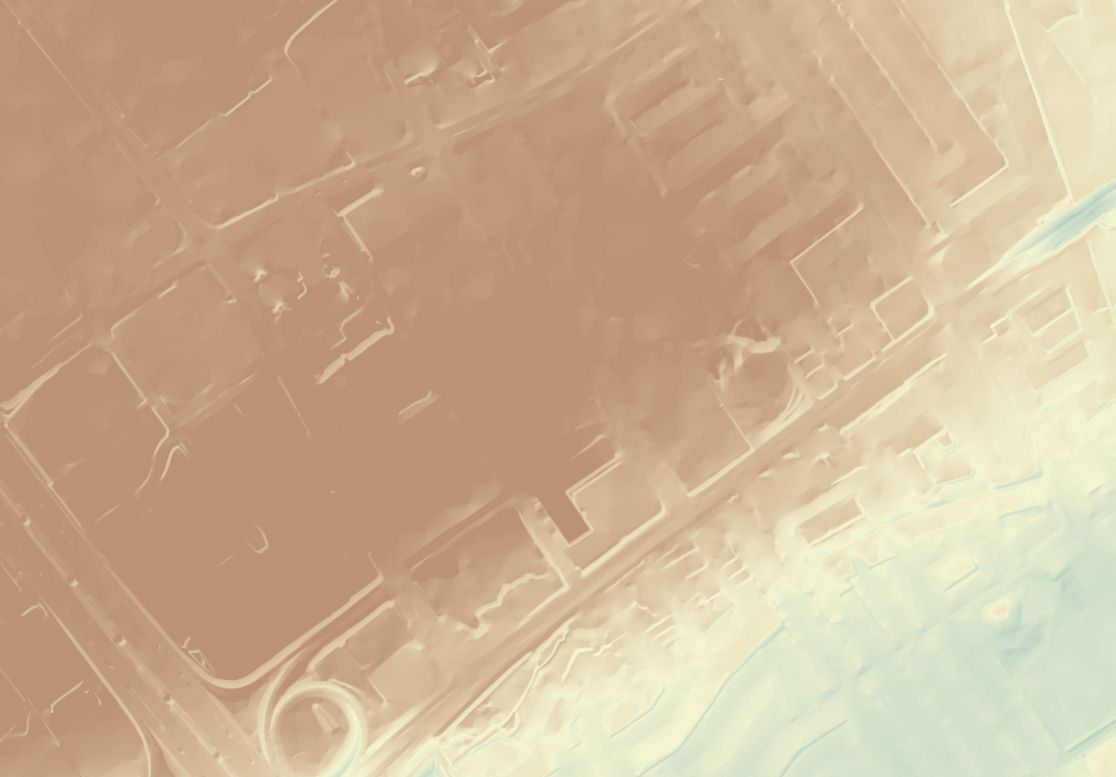It's possible.
This involves several steps, first of being to convert the DEM to an RGB based raster. This is done by "exporting" the raster to a new dataset after you've applied the desired colour ramp.
I'm posting the article contents below as sometimes links can disappear and become null.
At the core of this display method is a combination of pan-sharpening,
contrast stretching, and gamma stretching functions. The
pan-sharpening function uses a panchromatic and a multispectral
(three-band RGB) raster as input. In the example here, the inputs are
(1) a hillshade created from a DEM as the panchromatic raster and (2)
a DEM with a color ramp that has been converted to a multispectral
raster. The output from the pan-sharpening function is then used as
input for the contrast and gamma stretching functions.
Since layer-tinted DEMs are not usually managed as three-band RGB
rasters, a conversion is required.
To do this, add the DEM to ArcMap, right-click the layer in the table
of contents, and click Properties. On the Symbology tab, select the
color ramp you want to use to display the data.
Click OK to close the Layer Properties dialog box. Right-click the
layer in the table of contents, click Data, and click Export Data.
In the Export Raster Data dialog box, check Use Renderer and check
Force RGB.
Choose a location and input a name, then click Save. Choose to add the
exported data to the map as a layer. The three-band RGB image will be
added to the table of contents.
At this point, you can either follow the steps described in the
previous article to add the raster to a mosaic dataset and render it,
or you can use the instructions below if you want to use the Image
Analysis tools instead of a mosaic dataset.
Define the functions for the raster datasets by following the steps
below:
Add the grayscale hillshade and multispectral RGB layer tint rasters
to ArcMap, if they have not already been added.
Open the Image Analysis window by clicking Windows on the top bar
menu, then clicking Image Analysis.
In the top section of the Image Analysis window, select both the
hillshade and RGB rasters using the Control key and clicking on each
raster’s name to highlight it. Click the Pan-Sharpening tool in the
Processing section of the Image Analysis window. This will create a
new layer, which will be listed as the top layer in the Image Analysis
window.
In the Image Analysis window, right-click the newly generated
pan-sharpening layer and click Properties.
On the Functions tab, right-click the Pansharpening Function and click
Properties. On the General tab of the Raster Function Properties
dialog box, change the Output Pixel Type to 8 Bit Unsigned.
On the Pan Sharpen tab, change the Method to Simple Mean. Keep the
rest of the defaults and click OK.
Right-click Pansharpening Function, click Insert, and click Stretch
Function. Change the Type to Minimum-Maximum.
Check the Use Gamma option.
In the Gamma section of the dialog box, change the Gamma value from
1.0 to 0.5 for each of the three bands.
In the Statistics section of the dialog box, type 5 as the Min and 215
as the Max value for each of the three bands.
Click OK to check your results. After checking the results, feel free
to experiment with the gamma, minimum, and maximum values in the
Stretch Function.
Creating your display by using the Image Analysis window instead of
mosaic datasets results in a temporary raster. If you want to keep
your results, export the layer that you added the functions to from
ArcMap. To do this, right-click the layer in the table of contents and
click Export Data. The data you save can now be added to an ArcMap
session and will display with the final results.



